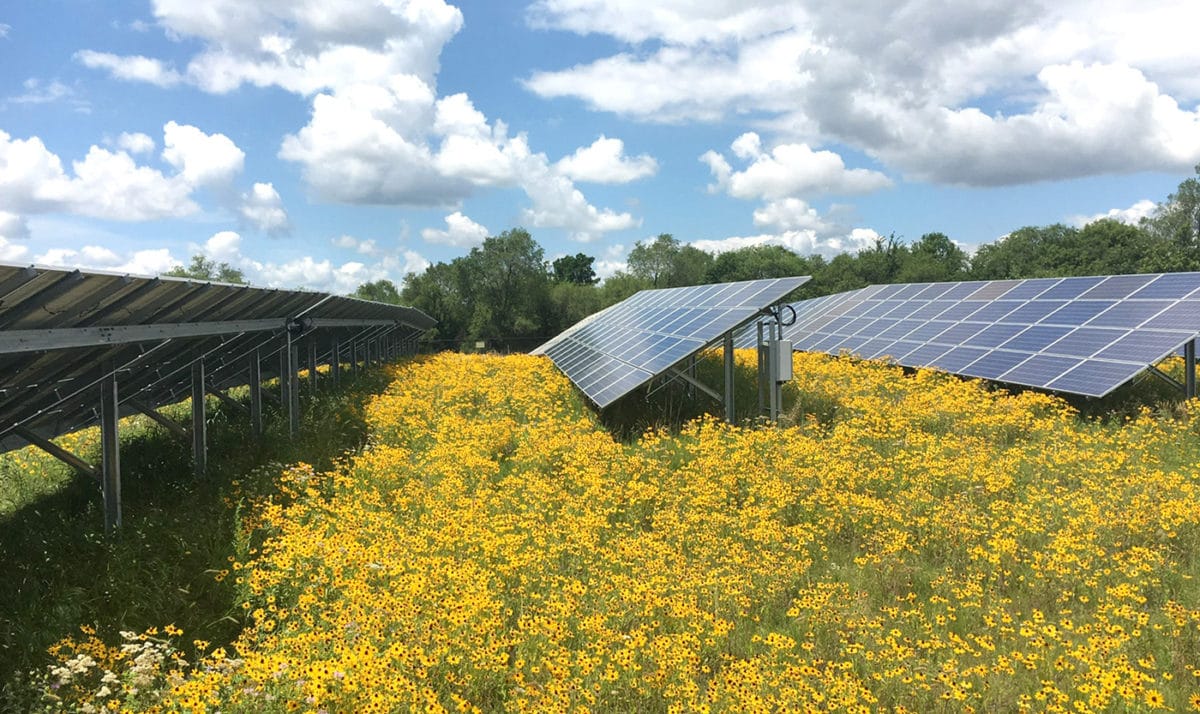As the Illinois solar market eagerly awaits completion of Future Energy Jobs Act procurement and program management, two pieces of legislation were enacted this summer that will help reduce uncertainty in some categories of project development. Governor Bruce Rauner signed into law Senate Bill (SB) 2591, now Public Act (PA) 100-0598 on June 29th and SB0486, now PA 100-0781 on August 10th. These acts provide parameters for property tax valuation of commercial solar systems, and address the impact of such systems that are sited on agricultural land.
PA 100-0598 adds solar installations to existing legislation regulating the impact of wind farms on agricultural land. This covers systems larger than 500 kW of capacity used for offsite power transactions, or systems larger than 2 MW that are used only for onsite consumption. It covers only projects not yet operational as of June 29th. It further requires an “Agricultural Impact Mitigation Agreement (AIMA)” that will enable the land to be able to be returned to agricultural use after the solar energy system’s life cycle, addressing decommissioning and abandonment issues. Besides wind farms, Illinois AIMAs are also used for fossil fuel pipelines and power transmission lines.
Recent concerns, warranted or not, of solar installations wiping out farmland wholesale, brought about this legislation. The issue of farmland loss to solar or wind farms pales in comparison to the loss of 13% of Illinois’ 27 million acres of farmland to residential and commercial development since 1950, a loss of about 77,000 acres, or 120 square miles, per year. Property enrolled, not just zoned, agricultural land can receive additional benefits, but only about 100,000 acres have taken advantage of this incentive.
The more recent signing, PA 100-0781, standardizes how a solar energy system that is used for off-site power generation is valued. The legislation exempts counties larger than 3,000,000 population, which will apply to Chicago and the rest of Cook County. The law establishes solar at $218,000 per MW, or $0.218 per watt., with limits on depreciation. This figure sounds low, even after incentives, but property tax valuation is typically made at a fraction of market value. This does not affect property tax rates that localities may charge, as long as it’s based on $218,000 per MW. The localities may also, at their discretion, abate this valuation. This legislation covers the assessment years 2018 through 2033, with the billing generally coming due the following year.
This content is protected by copyright and may not be reused. If you want to cooperate with us and would like to reuse some of our content, please contact: editors@pv-magazine.com.








By submitting this form you agree to pv magazine using your data for the purposes of publishing your comment.
Your personal data will only be disclosed or otherwise transmitted to third parties for the purposes of spam filtering or if this is necessary for technical maintenance of the website. Any other transfer to third parties will not take place unless this is justified on the basis of applicable data protection regulations or if pv magazine is legally obliged to do so.
You may revoke this consent at any time with effect for the future, in which case your personal data will be deleted immediately. Otherwise, your data will be deleted if pv magazine has processed your request or the purpose of data storage is fulfilled.
Further information on data privacy can be found in our Data Protection Policy.